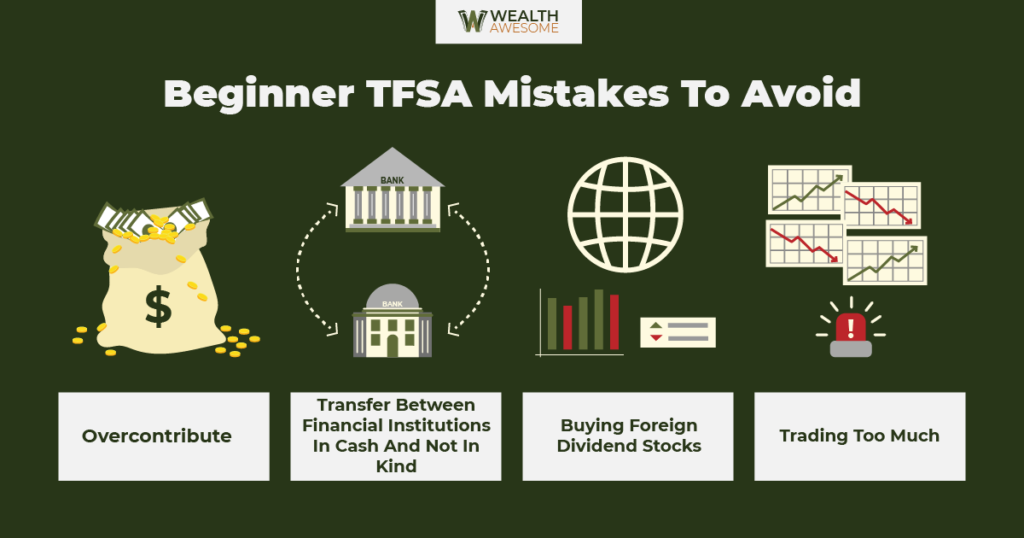Not sure how much you can contribute to your Tax-Free Savings Account (TFSA) in 2024?
As long as you know the year that you turned 18 and officially became eligible for the program and your current TFSA contributions, you can use the TFSA contribution limit calculator above to calculate the total contribution room you have left.
If you want some alternative solutions, there are a few other ways you get your TFSA contribution room.
How Does The TFSA Limit Calculator Work?
Your maximum contribution room depends on when you were born. The TFSA program was launched in 2009. Each year since, the CRA has expanded the total contribution limit for participants.
If you turned 18 before or during 2009, you could contribute a max of $88,000 as of 2023.
However, if you turned 18 after 2009, your maximum TFSA contribution room would be less, as the annual contribution limit from previous years (prior to you turning 18) would be subtracted from the maximum contribution room.
If you turned 18 after 2009, it’s best to use the TFSA room calculator above to figure out how much total you can contribute, as the calculations can get a bit tricky (unless you’re a math wiz).
After you figure out your maximum contribution room based on what year you were born, you subtract how much you have contributed to it to calculate your current TFSA contribution room.
TFSA Contribution Calculator Formula:
- Max TFSA Room – Total Amount Contributed = Current TFSA Contribution Room.
Note that even if you withdraw money from your TFSA in one year, you won’t be able to get that contribution room back until the following year. This is very important as it can lead to overcontribution for many people.
How to Check Your TFSA Contribution Limits with the CRA
Make sure you know your contribution limits because it can lead to steep penalties if you overcontribute. If you’re not sure, log in to your myCRA account, and your limit will be displayed in the TFSA section.
You can also give them a call at 1-800-959-8281, and the helpful phone agents at the Canada Revenue Agency can help you out.
TFSA Limits 2024
The annual contribution limit for the TFSA is determined by the CRA and is subject to change each year based on inflation and other economic factors.
Historically, the CRA has increased the annual contribution limit by at least $5,000 per year. Since 2019, the annual contribution limit has increased by at least $6,000 per year.
What Happens To Unused Contribution Room?
After using the calculator above, you may have realized that you have unused TFSA contribution room left over from previous years.
The good news is that unused contribution room can be carried forward indefinitely, increasing an individual’s total TFSA contribution room over time.
This means that if you were unable to max out your TFSA contributions in previous years, you wouldn’t lose that space.
Instead, the unused contribution room is added to your new limit for the upcoming year, allowing you more opportunities to invest tax-free.
For example, if the annual limit is $6,500 and you only contribute $4,000 in one year, you can carry forward the unused $2,500 to the next year. If the annual contribution limit is increased by another $6,500 the following year, you could carry forward the leftover contribution room, meaning you could contribute up to $9,000.
The cumulative aspect of TFSAs is what makes them such a highly versatile and beneficial savings tool.
It allows people the flexibility to catch up on their savings and investments in years when they have extra income without losing out on the tax benefits associated with these accounts.
What Happens if You Overcontribute to your TFSA

You will have to pay the penalty for overcontributing to your TFSA. It’s a significant penalty, also.
For the amount you are over the contribution limit, you will be taxed 1% of the excess amount every month.
If you overcontribute, it can be easy not to notice it either, as you don’t get any warning letter or anything that indicates you are receiving a penalty.
If you overcontribute by $1,000 in a year, it can lead to a $120 penalty. If you have received a penalty, you can try calling the CRA as you might be able to dispute the penalty. They may ask you to fill out this form.
How Many TFSAs Can I Open?
There is no limit to the number of TFSAs that you can open. For example, some individuals have two TFSAs – one for emergency savings and another for investing.
That being said, your total TFSA contribution limit still applies, no matter how many TFSAs you have open. You’ll just need to spread your contribution limit between multiple accounts.
If you have multiple TFSAs, it’s even more important to calculate your contribution room, as it can be harder to keep track of multiple accounts. This can make it all too easy to accidentally overcontribute.
How Much Money Can You Take Out Of Your TFSA Each Year?
There are no limits to how much you can withdraw from your TFSA every year.
But be aware that if you withdraw money in one year, you don’t get that contribution room back until the next year.
4 Beginner TFSA Mistakes to Avoid

1. Overcontributing
If you overcontribute to your TFSA, the CRA will impose a 1% penalty on the excess amount each month that it remains in your TFSA. If you’ve overcontributed by thousands of dollars, this can add up very fast.
2. Transfer between financial institutions in cash and not in kind
If you sell your investments in one TFSA and then transfer the cash to another financial institution, that cash will be deemed withdrawn, and you won’t have that room back until the following year.
If you decide to input the money back into your TFSA during the same fiscal year, this can lead to substantial overcontribution penalties.
3. Buying foreign dividend stocks
When you buy a foreign dividend stock in your TFSA, the dividend payouts issued by that company are subject to a 15% withholding tax, which can cut into your profits. Something to be aware of when buying foreign stocks in your TFSA.
Thankfully, there are lots of Canadian companies that pay regular dividends. Check out my list of Canada’s “dividend kings” if you’re looking for some great additions to your TFSA portfolio.
4. Trading too much
Day trading involves buying and selling stocks, options, or commodities within the same trading day. The goal is to capitalize on short-term price movements.
Day traders use various strategies and tools, like technical analysis or real-time news feeds, to make quick decisions and place a buy or sell order. Positions are typically closed out before the market closes to avoid overnight risk.
TFSAs are designed to serve as savings accounts and investment vehicles, and day trading in your TFSA could deem your investment account as a business. This could lead to the CRA revoking the account’s tax-free status and imposing capital gains tax on your profits. and you could lose the tax-free status of your TFSA.
Conclusion
Understanding both your annual and total TFSA contribution limits is important if you wish to avoid hefty tax penalties and get the most out of your registered account.
This TFSA contribution limit calculator will help you figure out how much you can contribute to your TFSA, so you can avoid overcontribution.
Want to learn more about TFSAs, how they work, and what investments they can hold? Be sure to check out my ultimate guide to TFSAs next!






Look like the calculator is wrong… when we try different year
The field says “what year did you turn 18”, did you enter that in correctly?
Great content, so easy to read and to the point! I wish I knew these earlier in life! With regards to mistake number three “Buying foreign dividend stocks”, how can one determine if it is a foreign dividend stocks? I am on my way to opening an account on Wealthsimple and I look forward to using your videos as a guide.
Thank you!
You can tell if it’s a foreign dividend stock, if it isn’t being traded on a Canadian exchange and it pays a dividend. For example, if you look up the ticker for Enbridge, it will have both a TSX and NYSE listed stock. If you buy the NYSE listed one, it will be a foreign dividend stock, but not if you buy the TSX one. Thanks for the compliments, I’m glad you enjoy my content!